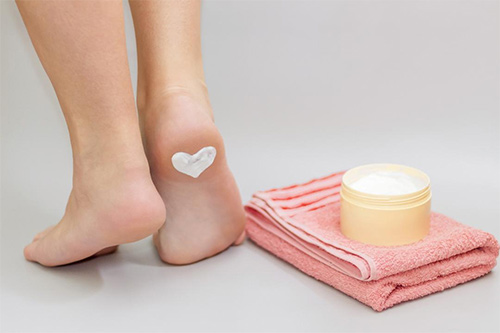9 Tips to Protect Your Feet If You Have Diabetes Brought to you by NerveSpa on Dec 03, 2019

For those with diabetes, a small blister or foot sore can lead to a severe foot infection.
Peripheral Neuropathy impacts the nerves in such a way that it can result in the loss of skin sensation and circulation problems.
Neuropathy may cause numbness, tingling, and burning of the feet. This lack of sensation often delays diagnoses and treatment of serious conditions that can lead to ulcers, infection, and even amputation.
Check out these nine tips to keep your feet healthy.
Examine Feet Daily
Seek treatment immediately if you injure your foot or notice an ingrown toenail, open wound, or any signs of infection.
To check your feet, sit in a comfortable chair, take off your shoes and socks, and check the top, bottom, sides of your feet, and in between your toes. If you can’t see all areas of your feet thoroughly, use a mirror or ask someone to help.
You should check for:
- Blisters, cuts, and sores
- Ingrown toenails
- Change in temperature
- Change in color
- Rashes or Athlete’s foot
When you examine your feet, you should be aware of any signs of infection, including:
- Redness
- Swelling
- Foul odors
- Drainage
- Pain
Seek treatment immediately if you injure your foot or notice an ingrown toenail, open wound, or any signs of infection.
Increase Your Activity
Work with your healthcare provider to develop an exercise plan tailored to your specific needs. You can try non-impact exercise, which is easy on the feet, such as:
- Swimming
- Cycling
- Yoga
Always talk to your doctor before implementing an exercise plan.
Wear Protection
Skip the barefoot look, and wear socks and well-fitted shoes or slippers that protect your feet. Always check the inside of your shoes before putting them on to make sure the lining is smooth and no objects are inside.
Investing in the right shoes is worth it. Slight rubbing from the wrong shoes can cause a blister that can eventually become infected. Switch your shoes and socks at even minor signs of irritation, since neuropathy may cause you not to feel when blisters are occurring.
Ask your podiatrist about diabetic shoes.
When it comes to choosing the right shoes and socks, here are some tips:
- Avoid flip flops and high heels
- Choose comfort: have your feet measured at a shoe store and always buy the size that fits your larger foot. Never buy shoes that need to be broken in, as they often result in blisters and sores.
- When it comes to socks, look for those without seams. Make sure to change your socks every day and more often if your feet get sweaty.
Avoid Hot and Cold
Check the water temperature before putting your feet in the water, and avoid using heated blankets, hot water bottles, and heady pads.
Promote Blood Flow
When inactive for long periods of time, elevate your feet, rotate your ankles, and flex your knees to promote circulation. Avoid crossing your legs or any position that can cut off circulation to your feet.
Avoid Smoking.
Ask your podiatrist about compression socks,
Wash Up and Stay Soft
High glucose levels could result in dry and cracked skin, which makes it easier for bacteria to get under your skin and harder for problems to heal.
Your feet should be washed daily to prevent sores and keep them clean. Keeping your skin soft and smooth with lotion can prevent skin cracking that may lead to infection. Don’t put the lotion in between your toes as this can cause Athlete’s foot.
Visit your Podiatrist
Schedule an annual appointment with your podiatrist for a diabetic foot exam. Your doctor may also request that you see him or her as advised, and you may have to go more often. The American Diabetes Associated recommends that you visit your podiatrist:
If you’re losing sensation in your feet: every 3-6 months
If you’re losing sensation in your feet and have peripheral artery disease: every 2-3 months
If you have a history of foot ulcers or have had an amputation: every 1-2 months.
Your doctor will ask you about symptoms, your foot care routine, and the type of footwear you choose. It’s important that you always stay honest so that they can treat you effectively.
Never miss an appointment because they may be able to find a problem you overlooked.
Your podiatrist can provide the proper care of toenails, corns, calluses, and more.
Try Electrotherapy
Electrotherapy has been scientifically proven to relieve nerve pain and treat neuropathy. This treatment method works by sending out electrical impulses, which interrupt or block pain signals.
Make sure to look for units that can target the entire foot at once, like NerveSpa, an aquatic nerve stimulator. NerveSpa uses water as a conduit, covering the whole foot to provide relief to multiple areas.
Control Your Blood Sugar
One of the best things you can do for your feet is to manage your diabetes as best as possible. Strict glucose control, along with insulin therapy, may lower the chances of people with diabetes having symptoms of neuropathy.